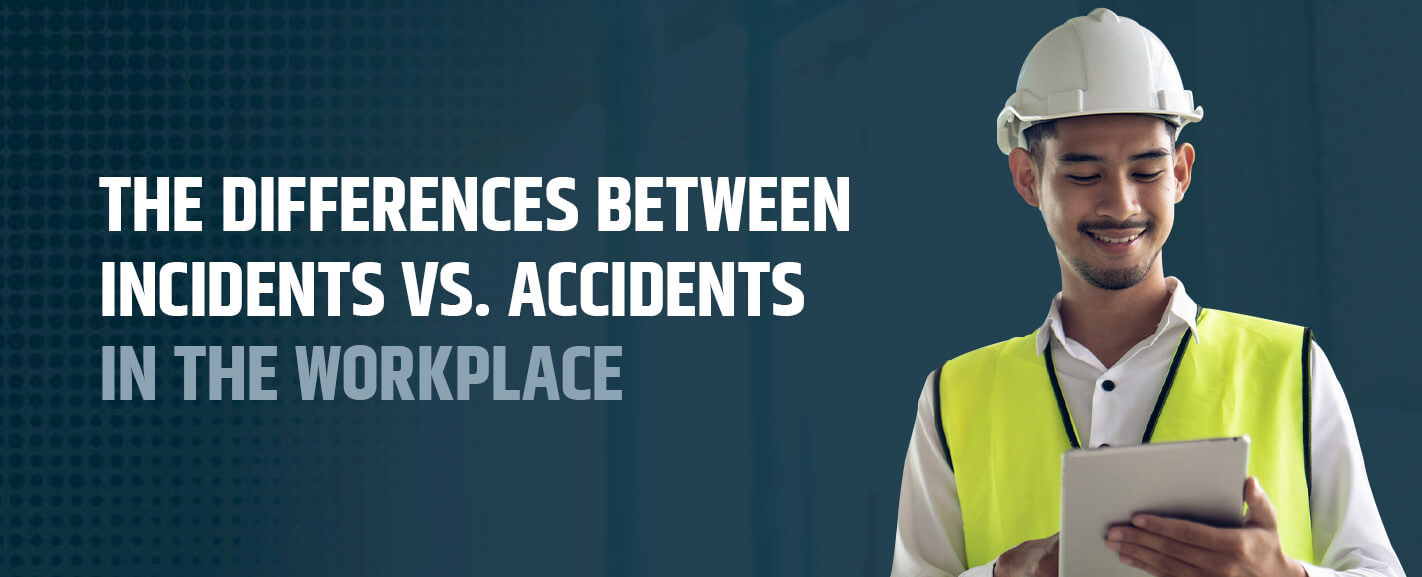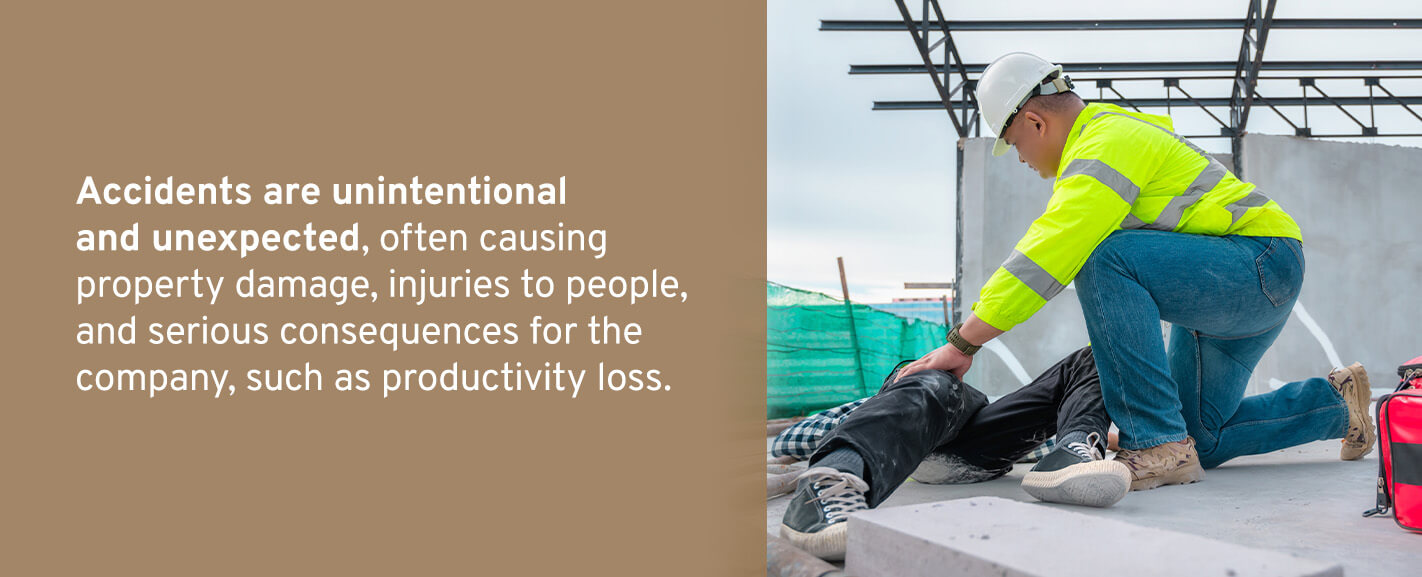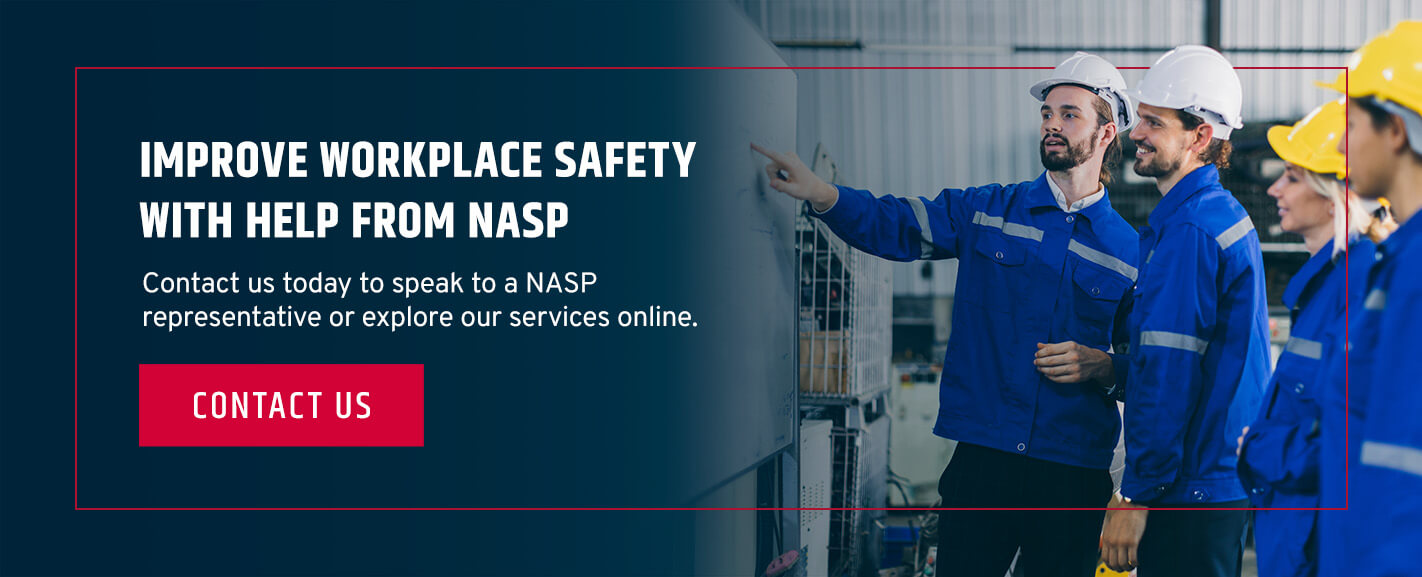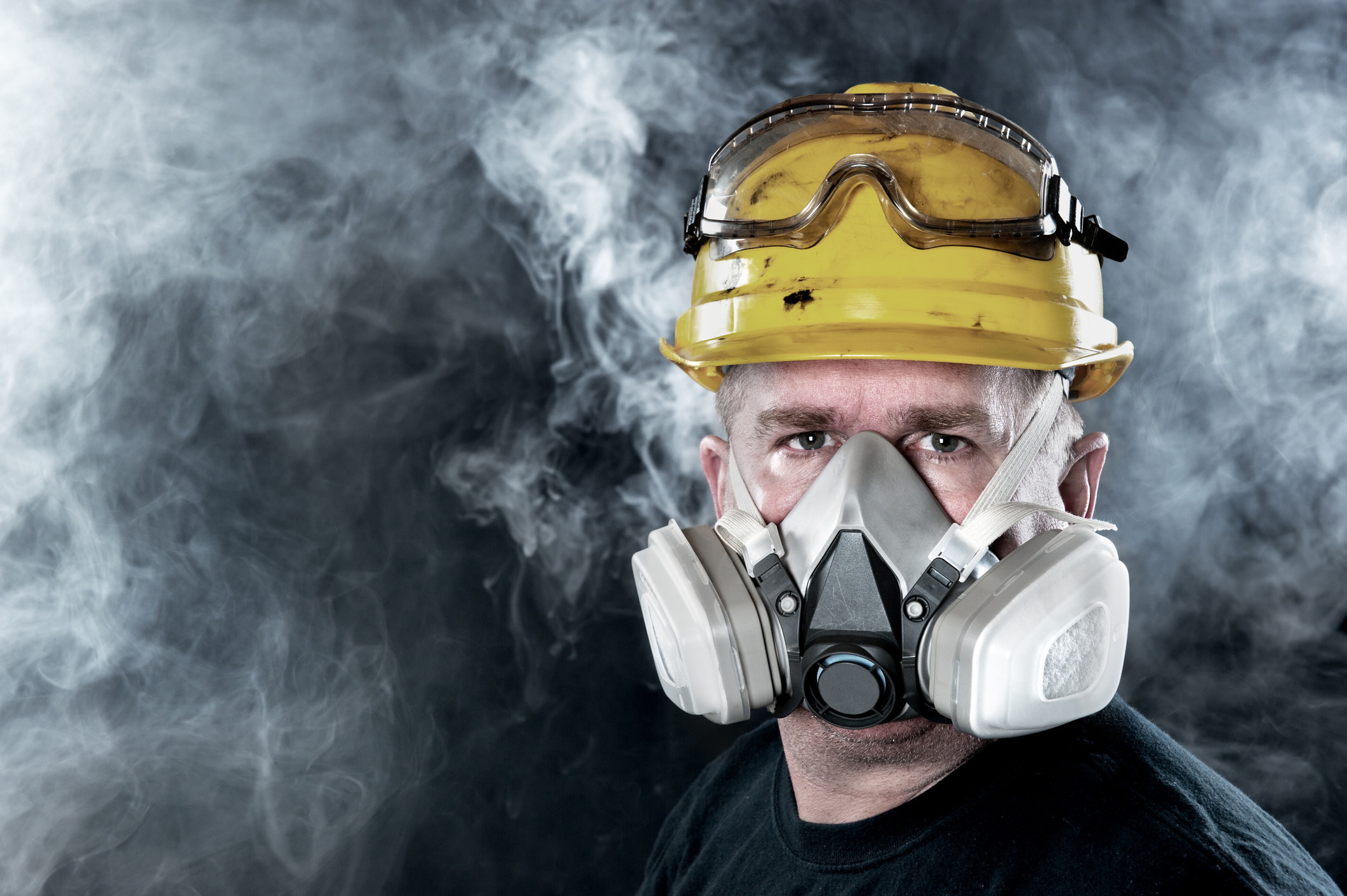The Differences Between Incidents vs. Accidents in the Workplace

When safety professionals know the differences between an incident vs. an accident, they can better reduce risks in the workplace, ensure safety during the day, and train professionals for optimal safety practices. While it might be challenging to understand the differences between each definition, safety professionals and OSHA regulations have made it easier to define what each word means within your company.
Below, we cover the definitions of each and how you can be more aware of incident and accident prevention in the workplace.
What Is an Incident?
Incidents are often defined as unplanned events, such as near-miss injuries, safety breaches, property damage, or minor bumps or bruises. In most cases, an incident doesn’t result in major harm to a person. An example of a near-miss may include a team member avoiding a forklift when the driver backed up suddenly.
Incidents can result in minor injuries but cause no lasting harm or fatalities. All the same, they may lead to serious consequences when not addressed by the company. Incidents can result in the following situations:
- Property damage
- Spills and pollution
- Environmental harm
- Work disruption
- Productivity loss
- Minor injuries
While all these outcomes are negative, they’re not severe, and won’t result in major injuries or fatalities. The difference between an incident and an accident is that accidents are more often categorized as severe. While all accidents are incidents, not all incidents are accidents.
What Is an Accident?
An accident is most often defined as a situation, hazard, or event which happens suddenly and leads to serious illness or injury. Accidents are unintentional and unexpected, often causing property damage, injuries to people, and serious consequences for the company, such as productivity loss.
An accident may occur for a variety of reasons; here are a few examples:
- Machine and equipment failure: When machines and equipment aren’t up-to-date or properly maintained, they may cause injuries or accidents.
- Lack of proper training: Untrained employees can put each other at risk. With proper training on machines and equipment, team members may be able to maintain the safety of other employees.
- Lack of proper supervision: A worksite without supervision is more likely to be unsafe.
- Reduced workplace conditions: Accidents often result from poor conditions at work, such as dirty machines or a neglected workspace.
- Lack of adherence to safety guidelines: When employees fail to adhere to safety guidelines, accidents may happen.
What Is the Difference Between an Incident and an Accident?
The differences between incidents and accidents should be carefully considered when dealing with hazards in the workplace. While the word “accident” is commonly used in the workplace, “incident” is a carefully curated word used by professionals to remove emotional bias from hazards and safety risks.
Here are two general definitions to keep handy:
- Accident: An accident is a situation that results in an injury or consequence. Companies aim to avoid accidents at all costs.
- Incident: An incident refers to an unwanted situation that could have resulted in an accident had safety prevention measures not been utilized. Incidents may sometimes refer to minor illnesses or injuries, or related consequences like property damage, productivity loss, or an illness diagnosis.
The definition of an accident or incident may vary depending on the industry your company works in. For example, an environmental health and safety accident may often be defined as a situation dealing with water levels, soil contamination, or air quality.
OSHA Incident Definition
Learning how OSHA defines incidents and accidents can help your business improve safety practices by following country and state-specific regulations. OSHA mandates that education in the workforce, in terms of safety and wellness, must be done in plain, specific language. While vocational jargon may sometimes be used for context, OSHA sticks to language workers can quickly understand.
Due to these mandates, the word “accident” is rarely, if ever, used to describe situations in the workplace. “Accident” tends to come with various nuances and non-specific language in a workplace conversation, which is why OSHA tends to avoid the word altogether. OSHA often considers “accident” to be a poor safety term and opts for the description “incident” instead.
Safety and wellness incidents come with at-fault parties and using the term “incident” ensures the right parties are properly educated should someone’s life or body be at risk. The term “incident” also takes the emotional bias out of safety risks, which helps companies start productive discussions about risk prevention to ensure the hazards don’t happen again.
Incidents are serious enough for paperwork when the following situations occur:
- Death: The company must report and record incidents resulting in fatalities.
- Hospitalization: Any form of in-patient care must be reported and recorded by the company.
- Amputation: The loss of a limb, hand, foot, or other body part must result in a report and record held within the company.
- Eye loss: Eye loss from a hazardous incident must be reported and recorded by the company.
- Work interference: If an incident injury results in days off work, transfers, or restricted work, the situation must be recorded.
- Medical treatment: Any incident injury resulting in medical treatment beyond first-aid must be recorded.
- Unconsciousness: The loss of consciousness from an incident must be recorded by the company.
- Additional injury diagnosis: Any other diagnosis resulting from an injury or illness must be recorded by the company.
Improve Workplace Safety with Help From NASP
The National Association of Safety Professionals (NASP) provides reliable and thorough workplace safety training for companies in the oil and gas, government, general, or construction industries. If you want to reduce the risk of incidents in the workplace, consider partnering with NASP.
Our company offers classroom training, online classes, on-site training, professional certifications, and various safety consulting services to help your business improve its practices. For companies that desire to reduce risk in the workplace, practice proper safety procedures, and train all employees in incident prevention, NASP has the tools you need.
Contact us today to speak to a NASP representative or explore our services online.
Blog Posts
Latest Posts
Related Posts






